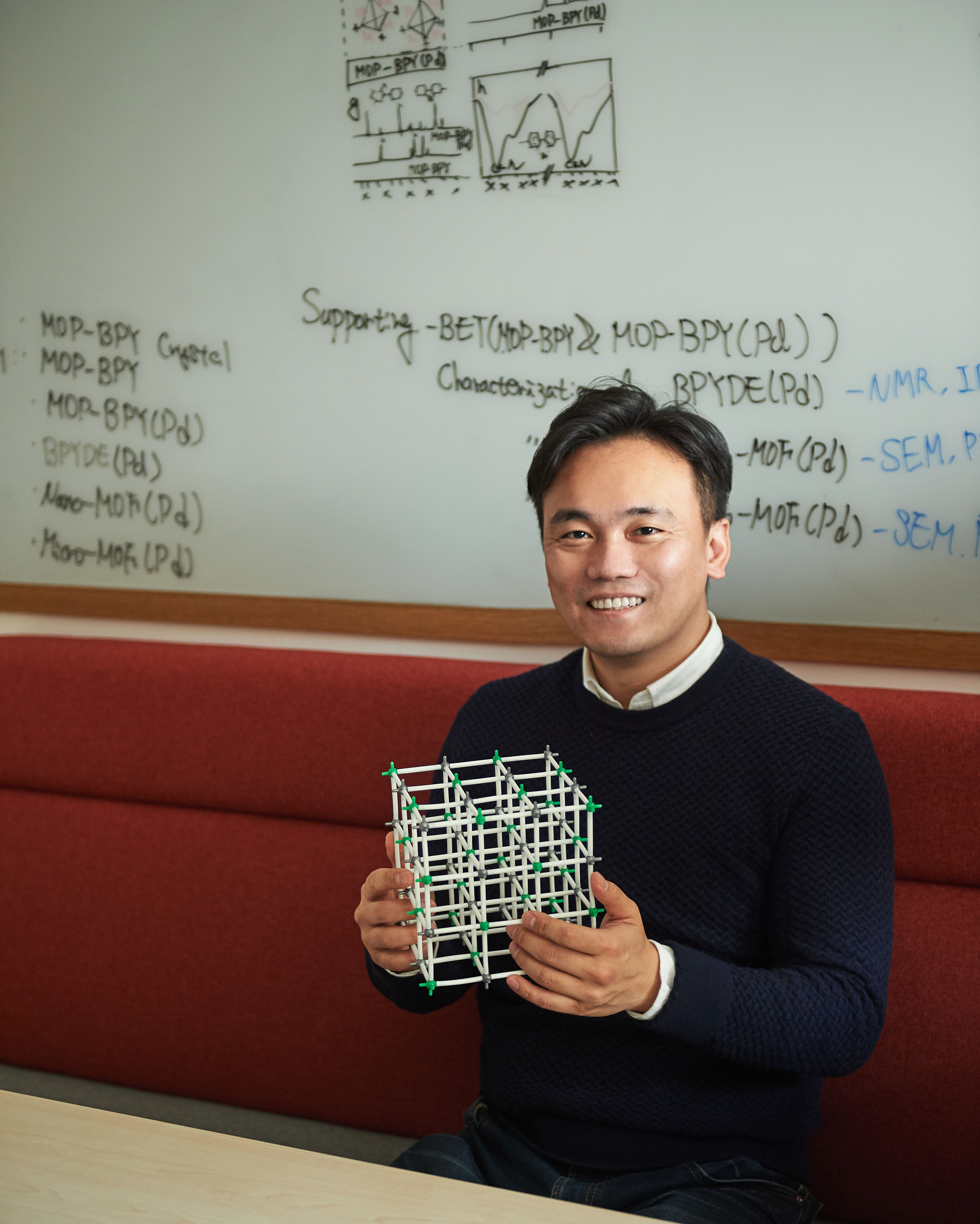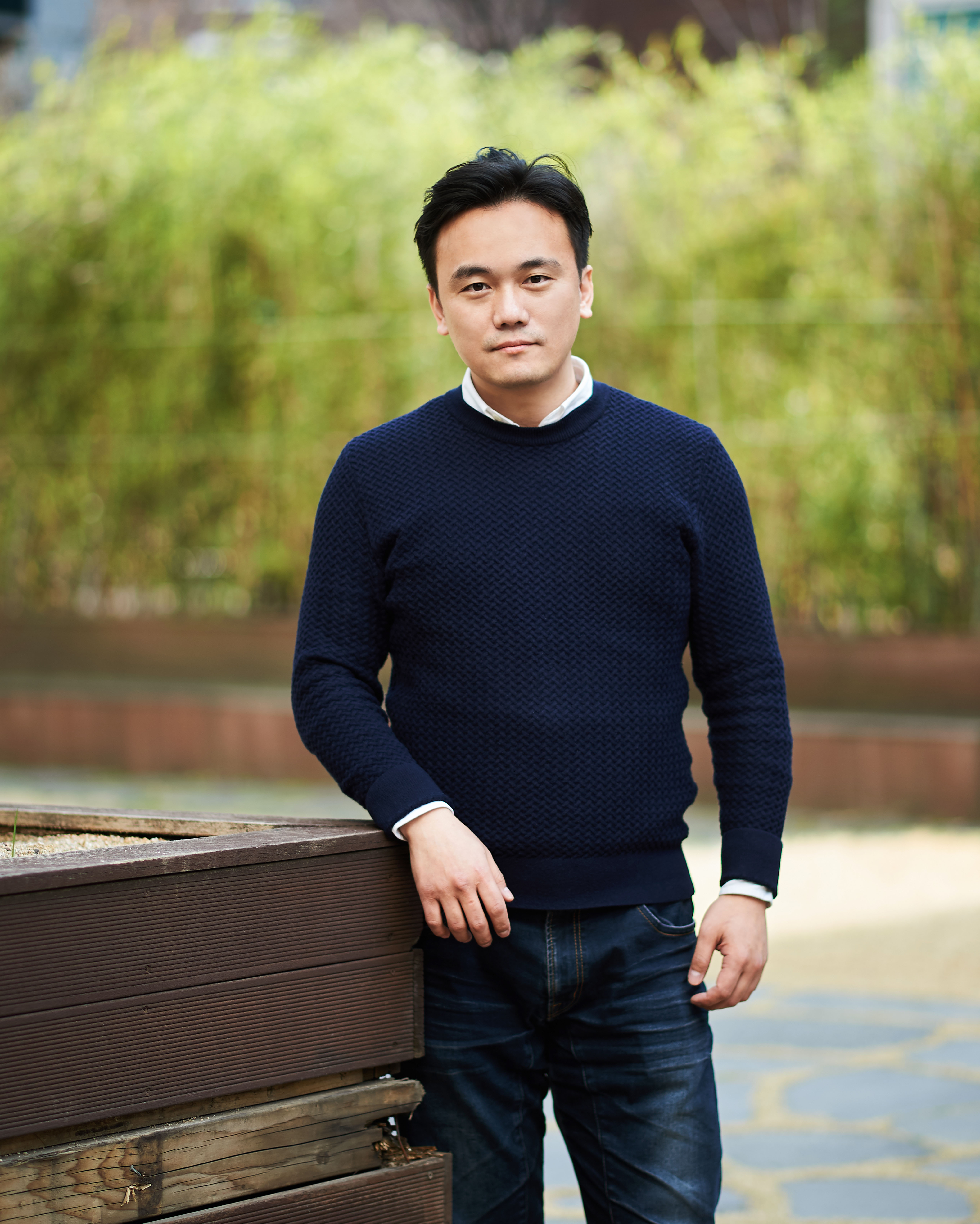[People] Advancing technologies in labs to the world
- Views 8573
- Writer 커뮤니케이션팀
- 보도일자 2020-05-06
|
Sookmyung Women’s University's technology transfer performance has been growing significantly. Our university's technology transfer income per faculty member has tripled compared to 2018 as of last year. In particular, Professor Gyeong-min Choi from the Department of Chemical and Biological Engineering achieved a technology transfer contract of 360 million won in three cases in 2019 alone. Take a look at the story of a professor who achieved brilliant results as a researcher and the vice dean of the Research & Business Development Foundation.
Q. Not long ago, you signed a technology transfer contract with a cosmetic developer Astis titled “Suction and release of functional substances using organo-metallic structure.” Can you briefly explain the technology?
A. Cosmetics containing vitamin C is very beneficial for the skin. However, cosmetics with vitamin C have a short shelf life. What can delay this degeneration? It is building a “house” for vitamin C. The process of vitamin C being stored in this house and escaping from it prevents degeneration. In addition, when you apply cosmetics, it rises upward to the skin’s surface. However, by creating a porous material so that vitamin C rises gradually and be effective all day, vitamin C that has been added is allowed to be released slowly.
Q. I understand that you have been conducting a joint research with the company since 2018. Please introduce the process from the research stage to the conclusion of the technology transfer contract.
A. I first learned about the company through an introduction by the Research & Business Development Foundation. The company wanted to find a way to protect the vitamins contained in cosmetics. I didn't know much about bio or vitamins, but as I explained earlier, I thought a house for molecules might be able to protect vitamins. After meeting in 2018, I conducted research for about a year. We devised the technology needed by the company, had it patented, and immediately transferred the patent to the company. Since then, technology transfer has not ended, but continues.

Q. The ranking of technology transfer income per professor by our university has risen 23 places compared to last year, and currently ranked eighth. What do you think is the driving force behind this increase in technology transfer income?
A. Research & Business Development Foundation leading the strategies was a big part of the efficient technology transfer process. There are some areas led by professors, but the Research & Business Development Foundation’s Office of Technology Licensing leading the way in preparing strategies led to greater technology transfer. It is not a method in which professors make small progress through acquaintances or a company they know, but it is a method in which technology traders and teams strategically lead efficient technology transfer.

Q. The importance of industry-university cooperation is increasingly emphasized due to various internal and external factors such as stabilization of university finances and self-reliant technology. What do you think is the key to securing competitiveness in spreading research results in the laboratory to industries?
A. It is the “open mind” of professors. The research fields of professors are very advanced. By being very advanced, professors can publish good papers and create a good foundation on solid results. However, if professors are too caught up in being the cutting-edge, it is difficult to come up with technologies that can be used in industries. For industries, technologies that can be used right now are more important than technologies that are 10 years ahead. When we open our eyes to what companies need now, we begin to see many things we can do.

Q. This year, the government also decided to expand various supports for university-industry cooperation projects. What specific support do you think is needed the most?
A. I would like to receive support for fostering specialized personnel. To transfer technology, we have to issue a patent, conduct a technical investigation, market, and conduct real trade. There is also a need to promote it and understand the company's demand. That is why the Research & Business Development Foundation needs to be specialized. I think the Research & Business Development Foundation’s Office of Technology Licensing needs to acquire many experts and foster people who can trade technology so that they can utilize the technologies of the university. In particular, I hope there can be support for nurturing manpower that will enable students to experience the entire process of technology transfer.
Q. As the Vice Dean of the Research & Business Development Foundation and a research professor, please tell us about your future plans.
A. As the vice dean, I want to help other professors think “If he can do it (technology transfer), so can I!” This is my fifth year as the vice dean, but I knew nothing about business planning when I first started. As time went on, I was able to transfer technology, perform many industrial activities, and receive a lot of help from the Research & Business Development Foundation. As the vice dean, I want to show that technology transfer is something “anyone with interest can do,” and at the same time, improve the institution or system so that it can be realized.
As a researcher, I want to lead research paper publication and industry-academia together. Based on my research, I would like to increase the number of product commercialization by enterprises. However, I also don't want to miss out on writing research papers. Students in our lab are also juggling papers and industry-academia cooperation. It is important to advance the two together.




![[People] 연구실 안 기술을 세상 밖으로](/_attach/old/dext5editordata/2020/03/20200331_093450667_95613.jpg)